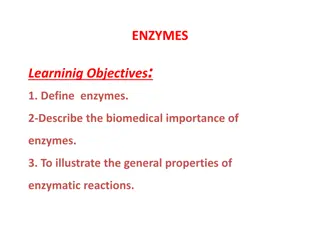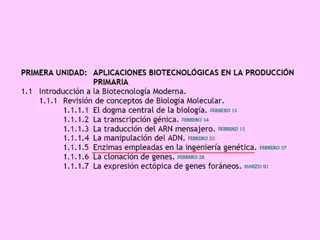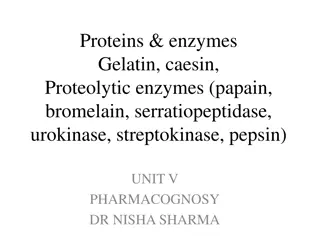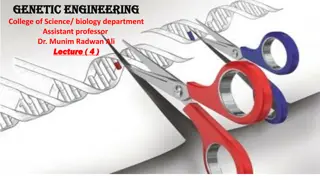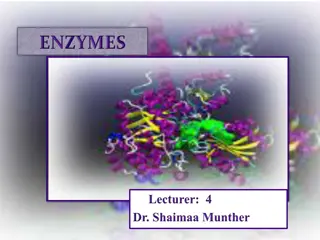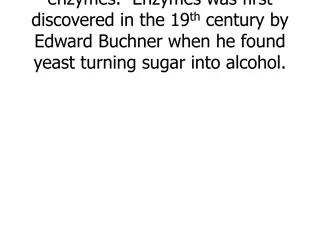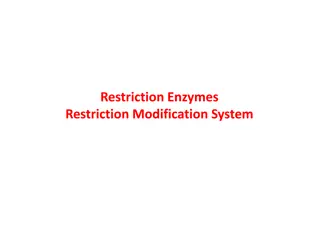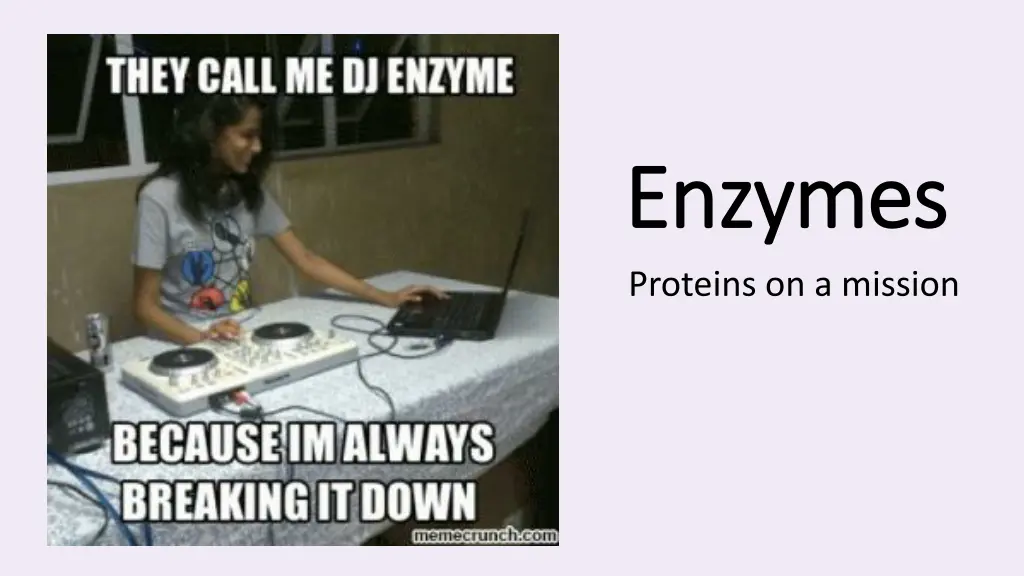
Understanding Enzymes: Catalysts of Life
Explore the essential role of enzymes in catalyzing chemical reactions, their impact on temperature and pH, and how they are crucial for metabolic processes. Discover how enzymes break down molecules, the significance of activation energy, and their relationship with temperature changes.
Download Presentation

Please find below an Image/Link to download the presentation.
The content on the website is provided AS IS for your information and personal use only. It may not be sold, licensed, or shared on other websites without obtaining consent from the author. If you encounter any issues during the download, it is possible that the publisher has removed the file from their server.
You are allowed to download the files provided on this website for personal or commercial use, subject to the condition that they are used lawfully. All files are the property of their respective owners.
The content on the website is provided AS IS for your information and personal use only. It may not be sold, licensed, or shared on other websites without obtaining consent from the author.
E N D
Presentation Transcript
Enzymes Enzymes Proteins on a mission
Todays Objectives Today s Objectives Describe a general enzyme-catalyzed reaction Discuss the relation of temperature and pH to rate of reaction in an enzyme-catalyzed reaction Explain how chemical reactions are affected by enzymes Identify the qualifying characteristics of a metalloenzyme
What was that all about?? What was that all about?? Saliva contains an enzyme called Amylase which breaks the polymer starch down into its monomers, sugars . The crushed up cracker contains a lot of starch. What do you think will happen to the starch as it interacts with the saliva and with the water?
T The simple he simple f facts acts All enzymes are proteins, but not all proteins are enzymes REMEMBER! Proteins (including enzymes) are held in their 3D forms by hydrogen bonds this will be important later! Enzymes usually end with the suffix ase Enzymes catalyze or speed up chemical reactions. They do this by building up or breaking down molecules Anabolic enzymes build up molecules Catabolic enzymes break down molecules Almost all metabolic processes in cells need enzymes in order for reactions to occur fast enough to sustain life
How do they work? How do they work? This enzyme is a catabolic enzyme
They can also work this way! They can also work this way! This enzyme is an anabolic enzyme
Why are enzymes so necessary? Why are enzymes so necessary? Activation energy is the amount of energy needed for a reaction to occur Enzymes increase the rate of reaction by lowering the activation energy Which of the lines on this graph shows an enzyme-catalyzed reaction? What is another way that activation energy might be reduced in a reaction (without using an enzyme)?
Enzymes and temperature change Enzymes and temperature change In general, an increase in temperature increases the rate of a chemical reaction But an enzyme can only get so hot before its hydrogen bonds break, or denature
Enzymes and temperature change Enzymes and temperature change When we overlay the two previous graphs, we can see that enzymes have an optimal temperature range What do you think is the optimal temperature for the enzymes in our body? At what temperature do you think enzyme activity would begin to decrease?
Enzymes and pH change Enzymes and pH change Different areas of the body have different normal pHs A healthy stomach pH is 1.5 - 3.5 A healthy mouth pH is 5.6 - 7.9 The enzymes that exist in various areas of the body typically have optimum pHs that match the pH of that area. Pepsin (digests protein in the stomach) has an optimum pH of 2 Amylase has an optimum pH of 7
Enzymes and pH change Enzymes and pH change Like temperature, pH also affects hydrogen bonding, and therefore, enzyme activity. Some enzymes have wider ranges, but often they behave like Goldilocks, only working well in a small pH range. What do you think the effects of a pH imbalance might be in the mouth? Would drinking acidic coffee (pH 5) help or hinder amylase s ability to digest starches?
Did you know? Did you know? Many enzymes are composed of more than just amino acids! Metalloenzymes make up around 1/3 of all enzymes, and this special type incorporates metal atoms into the structure NOTE! Metal is not part of the polypeptide/amino acid chain, but gets tangled up in the folded protein and held in place by covalent bonds
Back to our spit! Back to our spit! Iodine + starch = purple/black Iodine + sugar = red/brown Looking back at your prediction from earlier, what color do you think the solutions will turn when iodine is added? saliva water
Wrapping up Wrapping up Enzymes are specific types of proteins Some enzymes incorporate a metal atom and are called metalloenzymes Enzymes that build molecules up are called anabolic enzymes Enzymes that break molecules down are called catabolic enzymes Enzymes take substrates and convert them into products In-between, they form an enzyme-substrate complex Enzymes increase the rate of a reaction by decreasing the activation energy Due to the importance of hydrogen bonding in enzymes, they have optimal temperature and pH ranges


